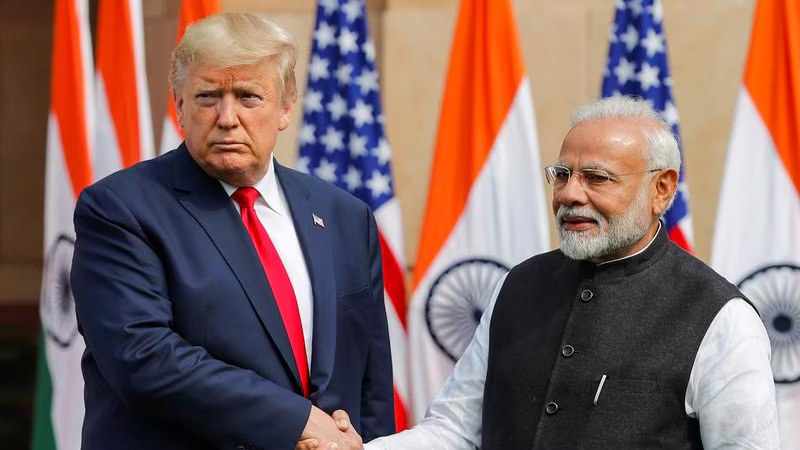By Ghulam Haider Shaikh

U.S. President Donald Trump’s decision to raise tariffs on Indian goods to 50% has reignited concerns about the future of U.S.-India economic relations. While the move may serve short-term political objectives within American domestic circles, its broader implications threaten to destabilize one of the world’s most strategically significant bilateral trade partnerships. For India, this development is not just an economic challenge, it is a test of diplomatic resilience and long-term planning.
Trump’s return to aggressive tariff policy is consistent with his “America First” doctrine, which favors protectionism over free trade. In targeting Indian exports, the intention is to discourage what he sees as unfair trade advantages and to reduce the U.S. trade deficit. However, such sweeping tariffs, especially when not coupled with bilateral negotiation, risk alienating key allies and disrupting global supply chains. India, as a major exporter of pharmaceuticals, textiles, and technology to the United States, is now forced to assess how to absorb the shock.
It is important to remember that India and the U.S. have built a relatively strong trade relationship over the last two decades, marked by growing cooperation in defense, energy, and information technology. Trade between the two nations reached over $100 billion in recent years, and efforts had been underway to remove tariff barriers and simplify access to each other’s markets. Trump’s new policy threatens to reverse these gains, undermining trust and placing stress on negotiations that had begun to yield results under the Biden administration.
More importantly, this tariff escalation may push India to further diversify its trading partners. With China already dominant in Asia and increasing economic engagement between India and nations like Russia, the European Union, and the Middle East, Trump’s hostile stance could weaken America’s leverage in South Asia. In a global environment where geopolitical alliances are increasingly being shaped by trade, punitive tariffs could ultimately harm Washington’s own strategic interests.
From India’s perspective, a calm and calculated response is essential. Reactionary counter-tariffs would only inflame tensions. Instead, India must leverage its growing global economic profile to build alliances, reinforce its position at forums like the World Trade Organization, and negotiate from a position of strength. Simultaneously, expanding intra-regional trade and enhancing self-reliance under its ‘Make in India’ policy will reduce vulnerability to such external shocks in the future.
Trump’s tariff hike also sends a message to other emerging economies, that even allies are not immune from abrupt shifts in U.S. trade policy. This unpredictability can strain multilateral frameworks and diminish investor confidence. If the goal is to achieve balanced trade, then it must be pursued through dialogue, transparency, and mutual respect, not unilateral imposition.
Ultimately, the 50% tariff is more than just an economic policy decision; it’s a reflection of the fragility of international trade when guided by populist impulses. As the world watches the evolving U.S.-India dynamic, it becomes clear that sustainable partnerships cannot be built on economic coercion. They require mutual interest, patience, and most importantly, predictability.

